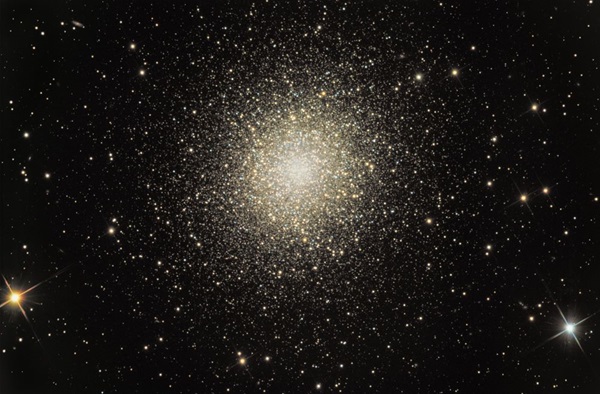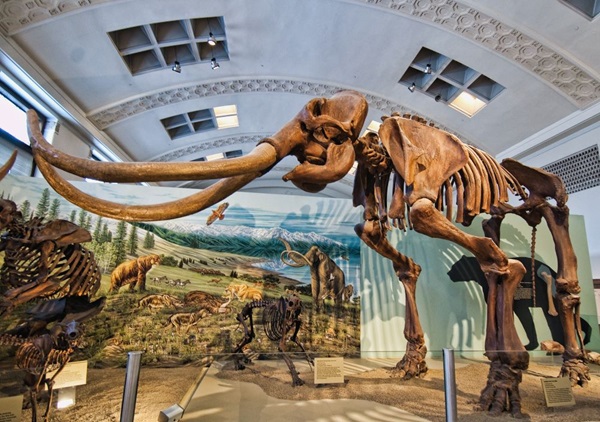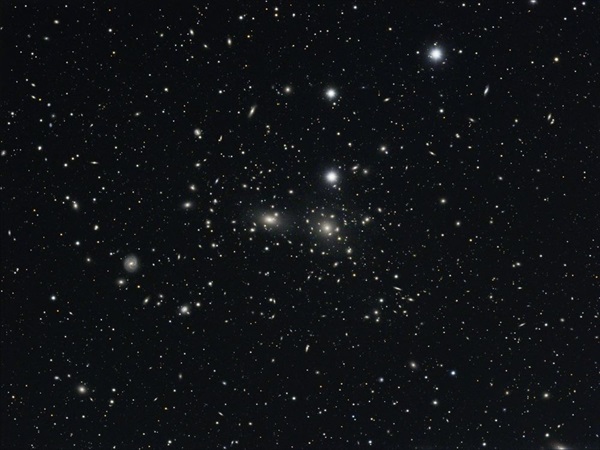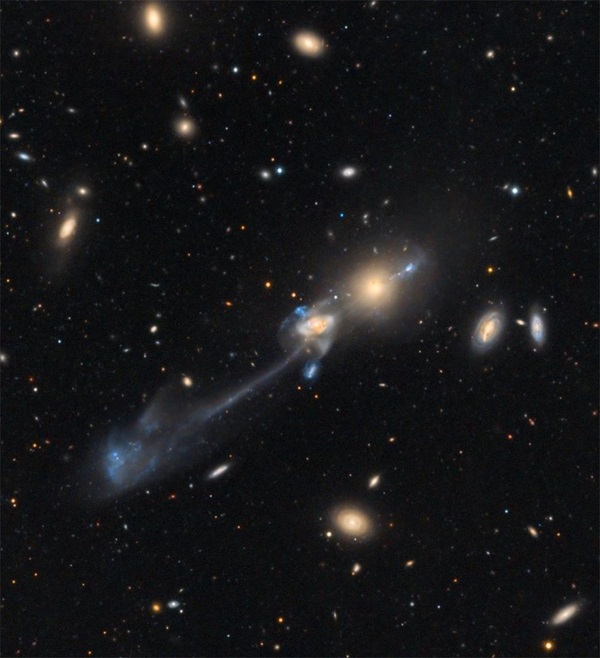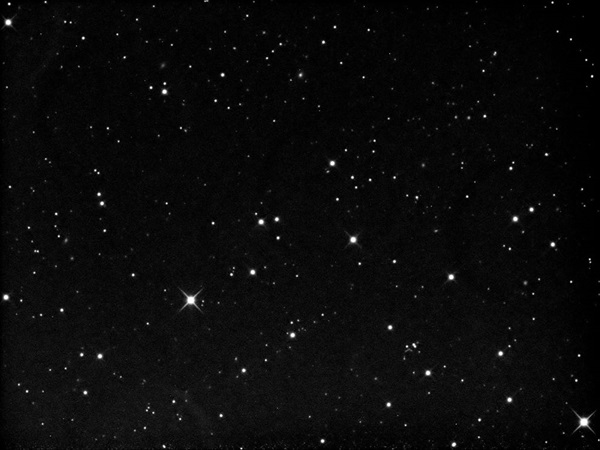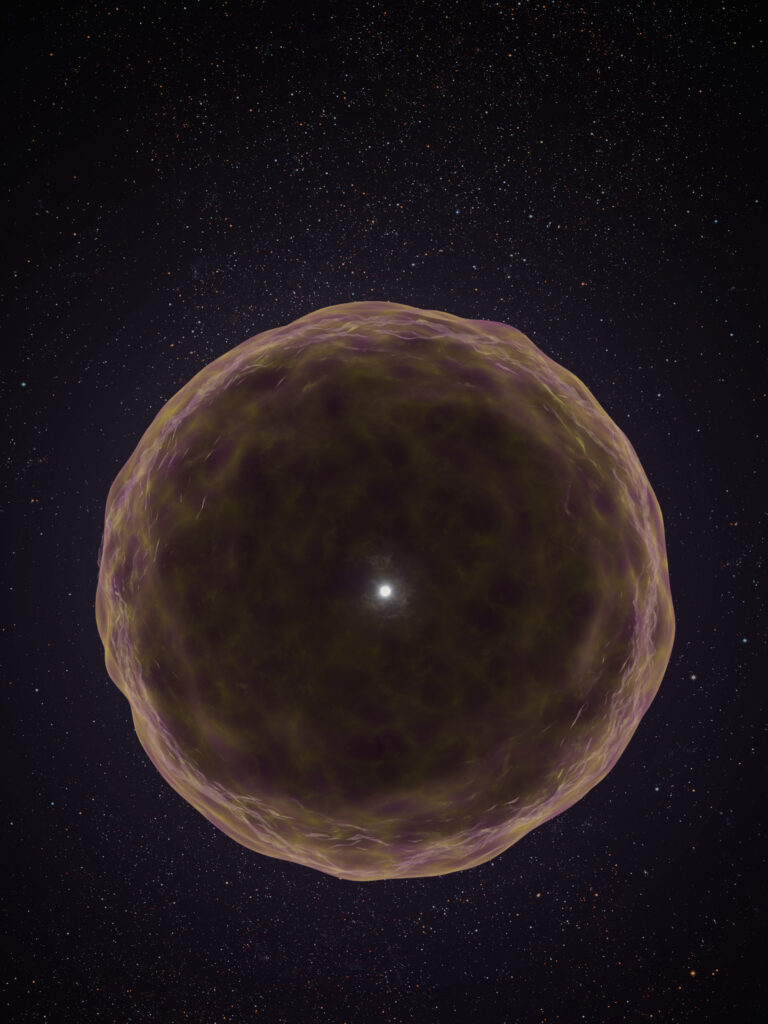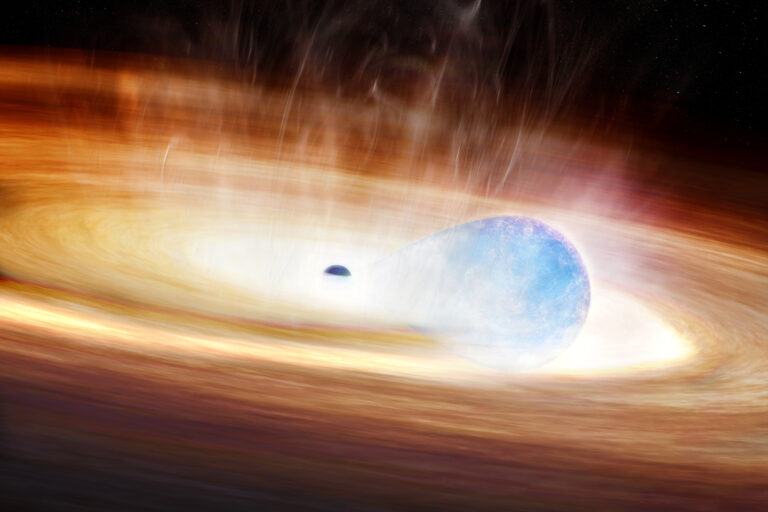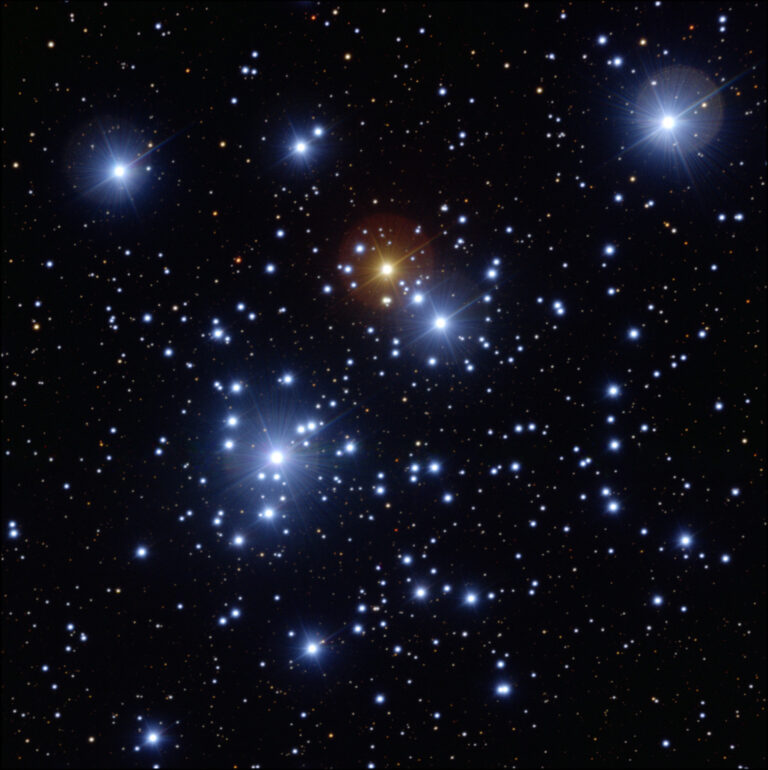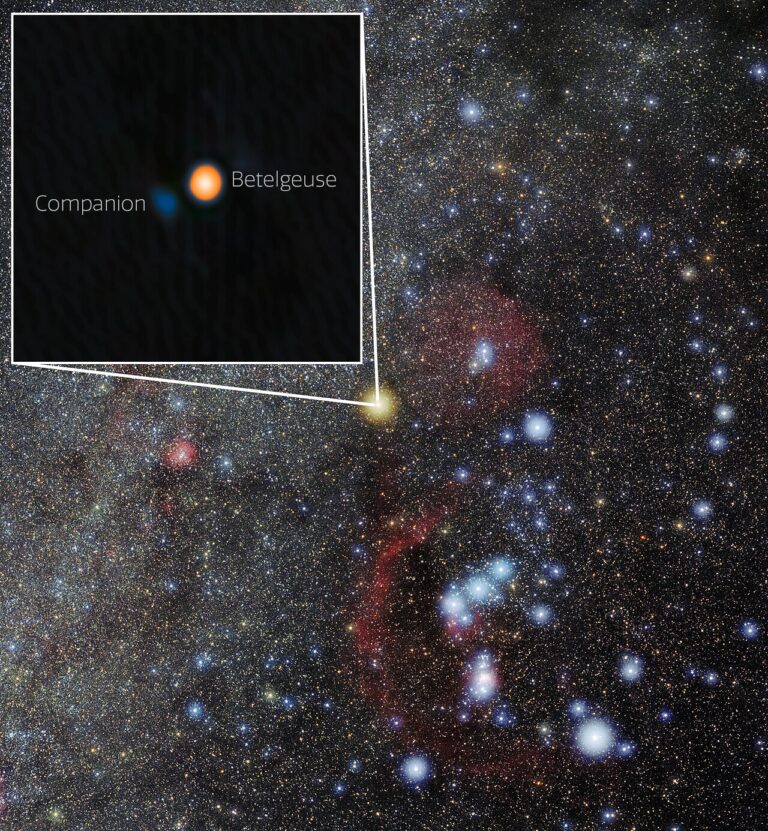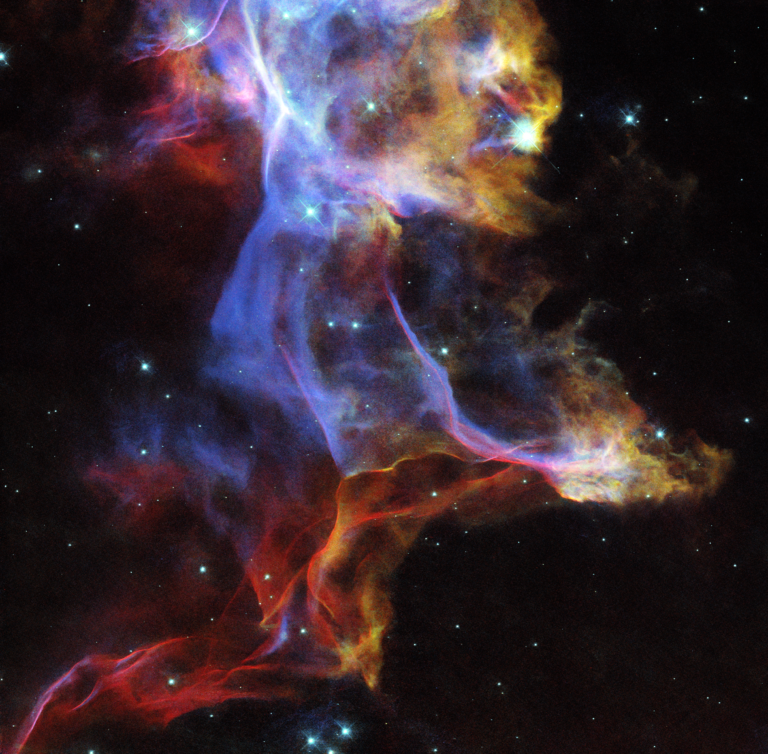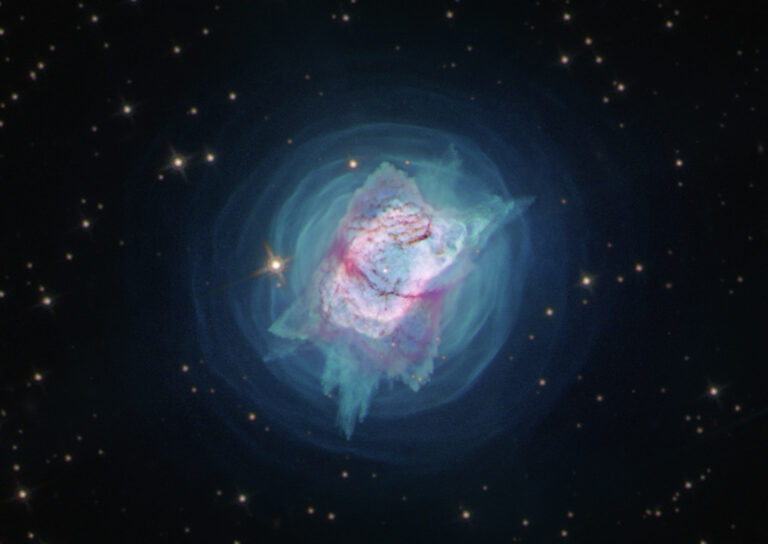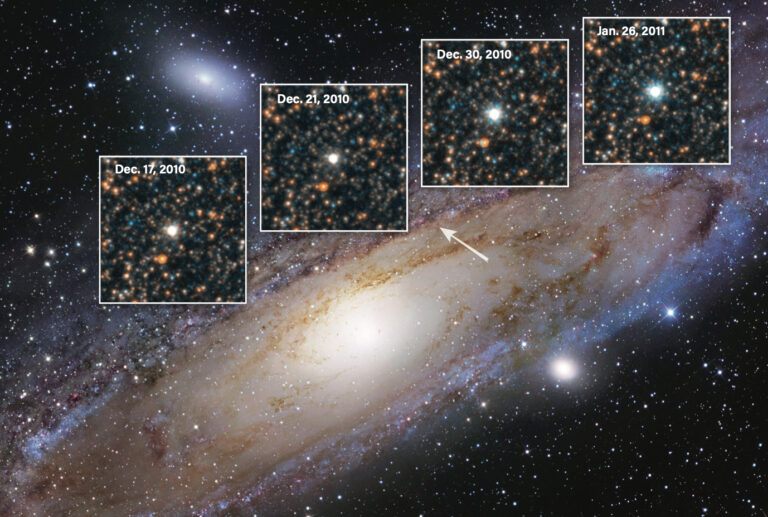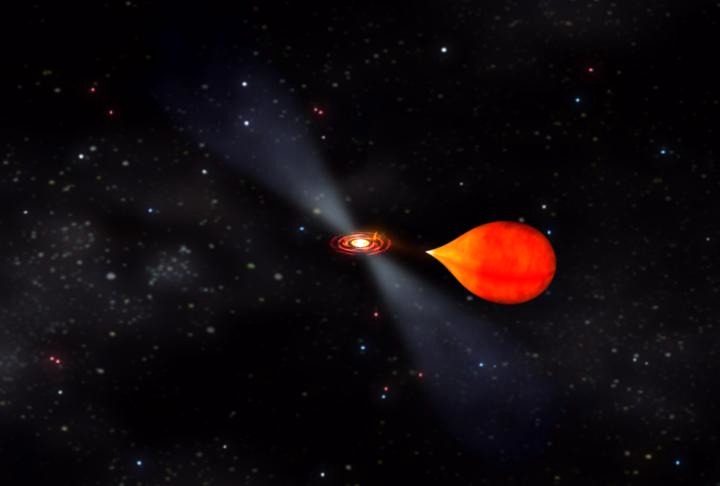Key Takeaways:
Astronomy and geology share one big constant — time. In astronomy, distance equals time. In geology, rock layers represent time.
Under normal conditions, the deeper you go, the older the rock layer. But, thanks to plate tectonics and erosion, rocks from every time period can also get jumbled up and exposed on the surface. Researchers use fossils to date the age of rocks relative to one another, with simpler life predating that which is more complex. So, for example, the Devonian layer is older than the Jurassic.
Thanks to the discovery of radioactive elements, isotopes (variants of elements), and their half-lives (how quickly they decay), geologists can use radiometric dating to determine when igneous rocks formed. In the case of fossils, volcanic ash layers deposited on top also contain minerals, like zircon, with radioactive isotopes that give accurate times. The speed of light, however, is astronomy’s isotope. Just as isotopes on Earth decay at a fixed rate, the speed of light moves at a finite speed. Telescopes, therefore, act as time machines because they can pick up light that has been en route for up to billions of years before passing it along to your eye or camera.
Peeling back the years
For stargazers, it’s easy to correlate deepsky objects to the number of years the photons have traveled. We just look up the distances. Where the fun begins is thinking about what Earth was like when those photons began their journey. You can start small, perhaps with starlight that is your age (if you’re in your early 40s, I recommend Capella), but I challenge you to go deeper — and farther.
The Pleistocene Epoch, better known as the Ice Age, includes any object between 11,700 and 2.58 million lightyears away. This comprises the entire swarm of globular clusters that surround the Milky Way except NGC 6397 and M4, whose light is roughly 7,000 to 8,000 years old (when Neolithic people roamed the world).
Looking farther out, the Andromeda Galaxy (M31) is 2.54 million light-years distant and 220,000 light-years in diameter. That means the light from its far spiral arm originated during the late Pliocene Epoch, while light from the front arms is from the Pleistocene!
Continuing our journey back in time, we come to the Pliocene Epoch, which ran from 5.33 to 2.58 Ma. On Earth, the giant armadillo, Glyptodon, was trundling across South America during this epoch. The Triangulum Galaxy (M33) lies 2.73 million light-years away, placing it firmly here as well. NGC 604, the giant HII region within M33, is a nebula easily seen through small scopes despite its distance.
Examples are Bode’s Galaxy (M81) and the Cigar Galaxy (M82) in Ursa Major. Both lie approximately 12 million lightyears away and form an impressive pair in rich-field scopes. The first is an oval with a bright core, and the second is lenticular with dark mottling from dust clouds.
The next epoch, the Oligocene, which covers 33.9 to 23 Ma, features one of my favorite deep-sky objects, the Whirlpool Galaxy (M51). With a distance of 23 million light-years, it lies on the border of this epoch and the Miocene. M51’s spiral arms are some of the easiest to see through a small telescope. On Earth, the Badlands of South Dakota and the northern plains were home to herds of oreodonts, strange piglike mammals closely related to camels.
The Eocene Epoch, from 56 to 33.9 Ma, contains the light from more bright galaxies than other epochs because the heart of Virgo Cluster lies within its range. M84, M86, and the giant elliptical M87 are among the brightest galaxies visible in the core of this cluster, located about 54 million light-years away.
During this time on Earth, a giant lake rich in fish covered parts of Colorado, Wyoming, and Utah, while the shoreline featured ancestors of flora that still exist today. Wyoming’s huge coal deposits are also from this epoch — the plants that became coal were alive then.
Next, we reach the Paleocene Epoch, which stretched from 66 to 56 Ma. One inviting object from this period we can target with our telescopes is the brightest galaxy in the constellation Lepus the Hare — the barred spiral NGC 1964. Its soft glow originated about a million years after the extinction of the dinosaurs kicked off this epoch.
A time of terrible lizards
One more step back moves us into the age of dinosaurs. It contains three distinct periods: the Cretaceous (from 145 to 66 Ma), the Jurassic (from 201 to 145 Ma), and the Triassic (from 252 to 201 Ma).
The Cretaceous Period sent us light from the peculiar barred spiral NGC 4027 in Corvus, 83 million light-years away, and NGC 520, a pair of colliding galaxies in Pisces, 105 million light-years distant. Both show their odd shapes through a small telescope. On terra firma, this was the time of Tyrannosaurus rex, Triceratops, and the “good mother reptile” Maiasaura — plus, the earliest flowering plants were establishing a foothold.
During the Jurassic Period, light from the Hydra-Centaurus Supercluster began its journey toward our planet. The closest of its faint fuzzies lies about 176 million light-years away. NGC 3312, at a distance of 194 million light-years, is the largest spiral in the group. On Earth, the real Jurassic Park contained lands lush with cycads that looked like a cross between a pineapple tree and a palm tree, as well as dinosaurs including Allosaurus, Apatosaurus, and Ankylosaurus roaming North America.
In the middle of the Triassic Period, the Seyfert galaxy Perseus A (NGC 1275) was emitting light that amateur astronomers can currently view through a 6-inch or larger scope from a dark site. It’s the brightest member of the Perseus Galaxy Cluster (Abell 426). On Earth, some of the earliest dinosaurs — Icthyosaurus and Plesiosaurus in the seas and Dilophosaurus on land — had already appeared when this light first left NGC 1275.
Before the dinosaurs
Leading up to the reign of the dinosaurs is the Permian Period, which lasted from 299 to 252 Ma. During that time, Hickson 88, a compact group of six galaxies in Aquarius, emitted light we’re just now seeing from a distance of 274 million light-years. At the end of the Permian Period, Earth experienced the Permian-Triassic extinction event, the planet’s most catastrophic ever. Paleontologists estimate that in one fell swoop, more than 90 percent of marine life, as well as 70 percent of terrestrial life, disappeared.
Preceding the Permian was the Carboniferous Period, from 359 to 299 Ma. The Coma Cluster (Abell 1656), a group containing more than 1,000 galaxies, lies within this range at some 336 million light-years away. Its two brightest members, NGC 4878 and NGC 4889, are visible through a medium-size scope under a dark sky.
This period got its name because many of our planet’s coal beds formed during it. Also during this time, so many sea lilies lived on the ocean floor that their deposition after death created limestone strata hundreds of feet thick.
Our next step back takes us to the Devonian Period, sometimes called “The Age of Fish,” which runs from 419 to 359 Ma. Most modern fish trace their ancestry to this time. One group of celestial objects whose light left during this period and is just now reaching Earth is Abell 2634, a galaxy cluster located some 415 million lightyears away in Pegasus. An 11-inch or larger scope under a dark sky will reveal NGC 7720, the cluster’s brightest member, which glows at magnitude 12.2.
Light reaching us emitted during the Silurian Period, lasting from 443 to 419 Ma, comes from the largest, most luminous galaxies visible through amateur telescopes. The members of Abell 1185 in the constellation Ursa Major fall within this range.
Abell 1185 is the brightest of eight galaxy clusters in the Leo Supercluster. At magnitude 12.5, its brightest galaxy is NGC 3550. But its most interesting member is NGC 3561, dubbed “the Guitar.” This pair of interacting galaxies glows at magnitude 12.9 and sports an extensive plume only visible in photographs. During the Silurian Period on Earth, the first bony fish came into existence, and plants with tissues capable of carrying water and nutrients appeared on land.
The earliest times
The two remaining periods covering the earliest of Earth’s geologic history are the Ordovician (485 to 443 Ma) and the Cambrian (541 to 485 Ma). Within the corresponding distance, NGC 7016 is a huge elliptical galaxy 480 million lightyears away in Capricornus that glows at magnitude 13.0. Nearby is magnitude 13.2 NGC 7017, a ring galaxy with a brighter elliptical or lenticular component, as well as magnitude 12.6 NGC 7018, a double elliptical galaxy. All lie within galaxy cluster Abell 3744 and are within the reach of large amateur instruments.
At a slightly farther distance of 508 million light-years, you’ll encounter the Hercules Galaxy Cluster, also known as Abell 2151. Its brightest member, giant elliptical galaxy NGC 6041, glows at magnitude 14.1 — bright enough to be seen through a large amateur telescope.
On Earth, the Ordovician Period saw greater diversification of life than any other time. Corals, bryozoans, and the first vertebrates appeared during the Ordovician. And during the Cambrian Period came the Cambrian Explosion, which sounds like an ancient supernova but was actually the point when life developed shells and fossils became common in sedimentary rocks.
All the periods and epochs I’ve described so far fall within one of only two eons in geologic history: the Phanerozoic Eon, which began 541 Ma. Every moment before that — from Earth’s formation 4.54 billion years ago to the start of the Phanerozoic Eon — is part of the Precambrian Eon.
At distances beyond 541 million lightyears, even the brightest galaxies are 15th magnitude and fainter. Such objects don’t make great targets for telescopes with apertures under 20 inches. However, we can view quasars, the superluminous cores of some galaxies.
The first quasar discovered, 3C273, lies in the constellation Virgo. And, although it looks like a typical magnitude 11.6 star, it lies more than 2.4 billion light-years away. So, the light you see left it when the most advanced life on Earth was cyanobacteria, which was responsible for the Great Oxygenation Event that quickly converted vast amounts of carbon dioxide in our atmosphere to oxygen.
For a final challenge, try finding the quasar HS 0624+6907 in Camelopardalis. At magnitude 13.8, it’s about as bright as Pluto ever appears. More importantly, its distance is 4.56 billion light-years, so the light you observe is about the same age as Earth.
Look down as well as up
The distances of objects are often overlooked by observers more interested in brightness, size, and detail. So, the next time you’re out observing, don’t forget the fourth dimension of time. It can connect you with the history beneath your feet.
What mountains were in their infancy when light was emitted from the target visible through your scope? For observers in Louisville, Kentucky — my hometown — the land was at 30° south latitude instead of 38° north when NGC 7720’s photons began their journey toward Earth 415 million years ago.
It’s a near certainty that continental drift, erosion, earthquakes, glaciers, or volcanoes have provided your observing site with an equally fascinating history

